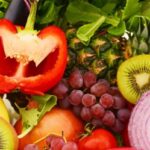
Following the results of a public consultation that ran from 29 July 2024 to 28 October 2024, the Canadian Food Inspection Agency (CFIA) proposed a guidance on 29 October 2024 regarding how plant-based foods (alternatives to egg products) should be labelled in Canada.
Guidance overview
This guidance only covers plant-based egg substitutes that do not meet the definition of processed egg products in the Safe Food for Canadians Regulations or the ingredient criteria for egg products in the Food and Drug Regulations (FDR). The labelling rules for other plant-based foods, including simulated meat and simulated poultry products as revised in October 2023, products that imitate whole eggs made from liquid, dried or frozen egg white as set out in Food and Drug Regulations B.22.032, and the ingredients and nutritional content comprising plant-based egg-like products are not covered in this guidance.
The labelling requirements for plant-based egg products must, in principle, comply with the Industry Labelling Tool and allow for the differentiation of foods that do not meet the compositional criteria of the Food and Drug Regulations and foods that do not have individual food standards (non-standardized products). All the items on food labels or in advertisements contribute to the overall impression created about a product to determine whether or not the plant-based alternative to egg products may be misleading, such as:
– the common name
– claims and statements
– list of ingredients
– images (pictures, vignettes and logos)
– how the product appears or is represented (including packaging).
Therefore, to avoid misleading labels, it is important that labels provide information on what the product is and clearly indicate to consumers that the product is not an egg product. Reference examples of what constitutes misleading labelling are given below.
Soybean protein liquid egg product in packaging just like liquid egg product (misleading example):
| Items on the label | Reasons for misleading labeling |
|---|---|
| The common name “plant-based liquid egg product” with the term “plant-based” presented in very small font above the term “liquid egg product” | -The term “liquid egg product” is more prominent than “plant-based” which could lead to confusion about the true nature of the food. -The term “plant-based” in the common name is vague and does not provide sufficient information for the consumer to know what the food precisely is. |
| “Omelette” statement | -An “omelette” statement can refer to how the product can be prepared. -The “omelette” statement, along with the common name, does not provide enough information for the consumer to know what the food precisely is. |
| Image of a farm | When viewed along with the common name and the “omelette” statement, the image of the farm could be interpreted as a farm where chickens were raised to produce the product. |
Soybean protein liquid egg product in packaging just like liquid egg product (non-misleading example):
| Items on the label | Reasons for non-misleading labeling |
|---|---|
| The common name “soybean protein liquid egg product” is prominently displayed, legible and uses the same font size for all 4 words | The common name “soybean protein liquid egg product” accurately describes what the food precisely is and is easily visible and equally prominent. |
| “Contains no eggs” claim | The claim provides complementary information to clarify that the product is not egg-based. |
| Image of an omelette | The image provides a visual about how the product could look when prepared. Image of an omelette. |
In addition, nutritional information may mislead consumers by emphasizing differences or similarities with egg products, such as ‘contains 30% less fat than chicken eggs’, and it is necessary to ensure that the requirements for Comparative nutrient content claims are met when considering such labelling. When making fine prints such as ‘contains no eggs’, close attention must also be paid to the provisions on allergen labelling and precautionary allergen labelling.
The future of plant-based food labelling in Japan and the rest of the world
Following the US and the EU, as the world’s attention increasingly focuses on labelling methods for plant-based foods, some countries have already established standards, but many countries continue to hold discussions with the food industry, consumers and others on voluntary nutrition labelling and nutritional claims, while maintaining the framework of existing laws and regulations. In Japan, the Q&As on the labelling of plant-based foodstuffs (Japanese) (e.g., ‘egg-like ingredients’ should be noted on allergen labels) was published in 2021, and the Japanese Agricultural Standards for Soya Meat Foods (Japanese) have been established and efforts are being made to prevent misidentification of allergen labels by promoting standardization. It is advisable to be prepared to flexibly take the necessary measures when exporting plant-based products. It is recommended to continue to pay attention to trends in the definition and regulation of plant-based food products in any country you might sell your products in.
Share/Like/Follow:
Newsletter Signup
We issue monthly e-newsletters, which provide you with the latest updates on food labeling/regulations in Japan.
If you want to make sure to not miss any issue, please click below.
Related Service
Research Services on Ingredients & Food Labeling -For the Japanese Market-
We verify the conformity of ingredients and additives with the standards for use in Japan based on specifications such as formulation lists. We also verify the conformity of the proposed labeling of ingredient names, nutrients, etc. with the labeling standards based on specifications such as formulation lists.

Label bank Co., Ltd. Regulatory inspections and Consulting Research staff
Born in Taiwan. Specializing in nutrition, she is mainly engaged in research work on ingredients and additives to be exported from Japan to overseas, as well as managing databases for legal search systems, such as nutrients and labeling standards in various countries.






